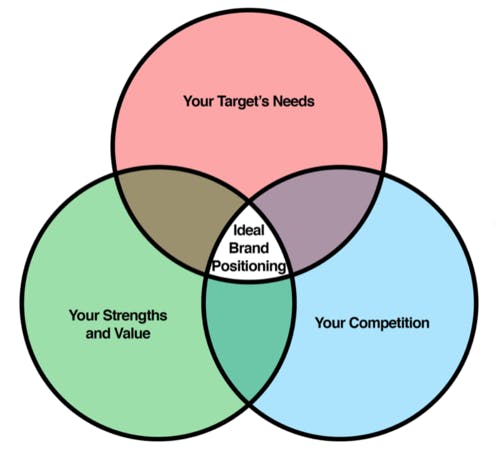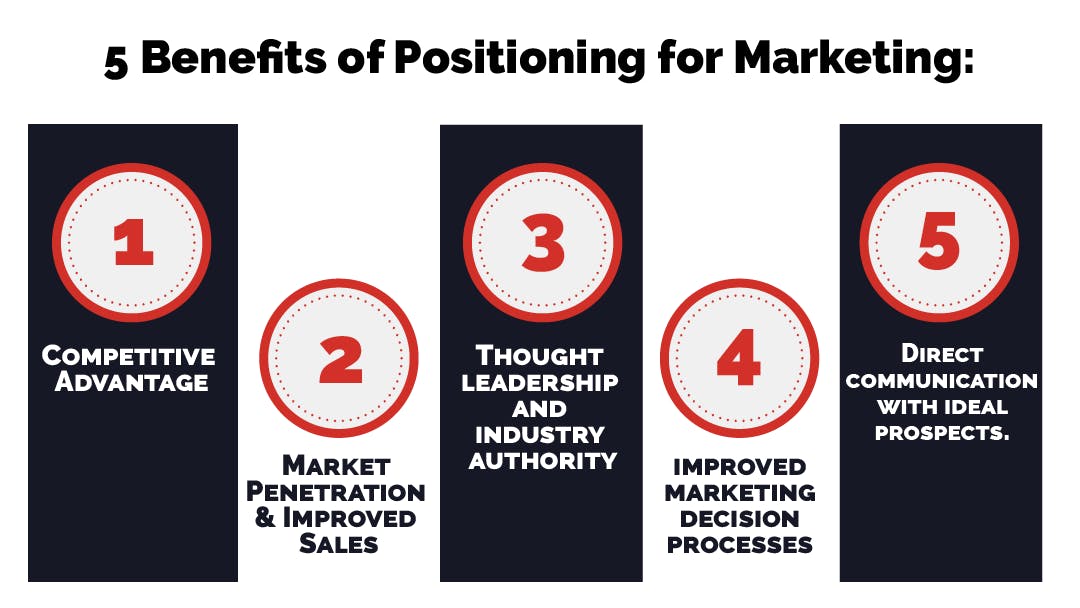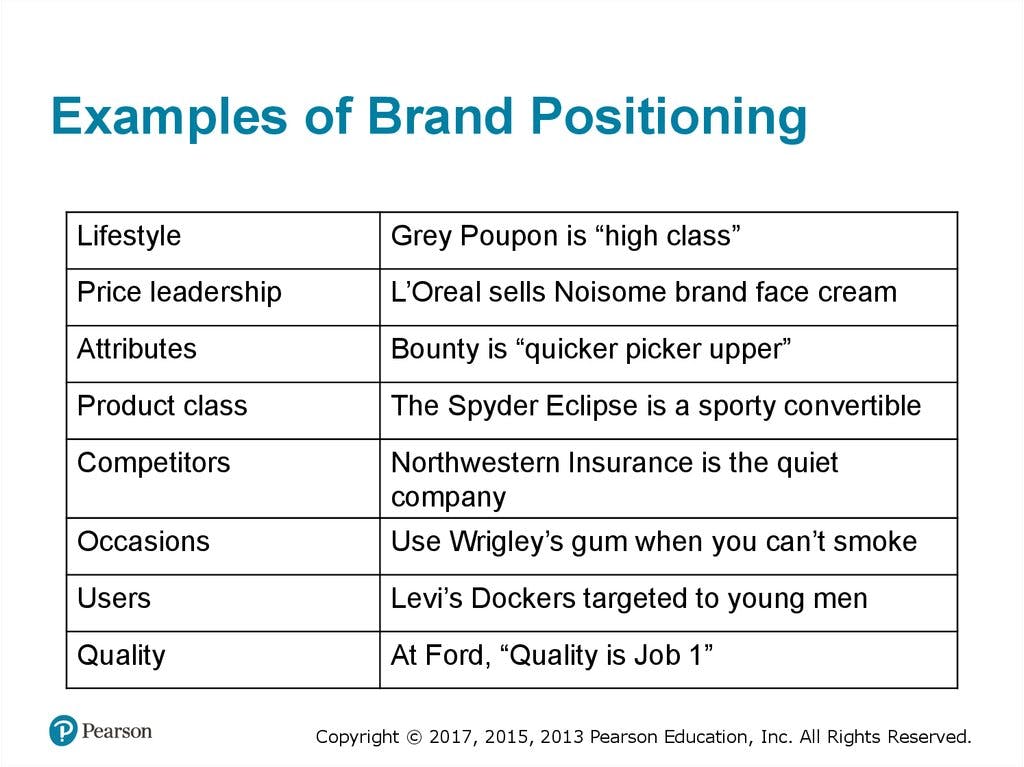9 types of positioning in marketing and how to develop it
Feb 16th, 2023

Nowadays, many companies offer similar products and services. For that reason, it is crucial to establish and defend a valuable position for the offerings. Positioning is the process of differentiating your brand or product from the rivals on the market, identifying your unique niche, and communicating that to your target customers. Effective positioning is an inevitable part of every brand’s or product’s success as it influences the way consumers perceive products, helps a brand stand out from the competition, and allows for building a good reputation.
Positioning has many advantages for companies. First, it helps provide consistent and positive experiences to consumers so they perceive your brand as reliable and trustworthy. As a result, it leads to greater customer satisfaction and increased loyalty.
Moreover, positioning can help you create a unique selling proposition and emphasize the strengths of your offering. If customers do not see the difference between your products and competitors’ ones, they will choose a cheaper option. On the other hand, with a strong unique selling proposition, you can charge a higher price for your products and services as your customers will perceive you as a quality brand. In addition, positioning contributes to creating a solid emotional connection with the audience, which affects the company’s ability to sell more products and do it at higher prices.
What is positioning in marketing?
Positioning is the place a brand occupies in the minds of its target customers. The concept also refers to the ability to shape consumers’ perceptions of a brand or product compared to rivals. The goal of positioning is to establish the brand’s identity or image and convince the consumers to view it in a particular way. Positioning is closely associated with perceived value. Marketers define value as the discrepancy between a potential customer’s evaluation of a product’s advantages and disadvantages compared to the competing products on the market. Value can be represented as product characteristics, benefits, design, or reasonable price.

David Ogilvy observed that marketing professionals have differing opinions on the definition of positioning. He defined positioning as “what the product does and who it is for”. Jack Trout and Al Ries suggested several definitions for the term “positioning”. They expanded the concept by including a product’s reputation and place among competitors’ offerings.
In the article titled Industrial Marketing, Jack Trout claimed that positioning is a mental tool employed by customers to simplify information and organize it logically. He stated that the average customer is overwhelmed with intrusive advertising and tends to ignore any information that does not fit into an empty niche in consciousness. In Positioning: The Battle for Your Mind, Jack Trout and Al Ries broadened the definition of positioning to include "an organized system for finding a window in mind”. It is predicated on the idea that communication can only occur at the appropriate time and under the proper conditions.
Positioning also refers to the strategy companies employ to promote their brand and attract clients’ attention. Brand positioning strategy typically includes
- emphasizing the features that set a brand apart from competitors,
- identifying and analyzing the brand’s main rivals,
- developing a positioning statement,
- and telling a brand’s story.
Companies position their products or brands by highlighting their distinctive characteristics or creating the right image through their branding strategies.
Further, we will describe nine types of positioning based on pricing, quality, benefits, and other characteristics. You can compare the advantages and disadvantages of each strategy and decide which one will work best for your company.
Types of positioning
According to the research by the Journal of Business & Industrial Marketing, market positioning is determined by hard criteria, such as product quality and relationship-building factors like personal contact. Other factors are also crucial, such as geographic coverage, the range of services offered, and a company's role in the supply chain. The researchers also found that views of the pursued market positioning strategies are influenced by one's acquaintance with a particular organization.
Quality positioning
Quality positioning is one of the basic strategies that implies that a company can use high-quality products or services to enhance its reputation. When consumers know that a brand offers exceptional products, they will trust it and perceive it as reliable and worth the cost.
Companies that employ a quality positioning strategy highlight the durability of their products and target a specific market. These brands focus their messaging on prestige rather than price to spark consumers’ interest and encourage them to buy a product regardless of its cost. Consumers can be attracted to a product or service because of organic ingredients, unique materials, or international accolades.
When emphasizing quality, businesses frequently contrast it with the quality of a rival who offers a comparable product. Their customers are tired of buying cheap products that only serve a short time. Instead, a brand can establish a reputation for high-quality, durable products and attract the attention of these consumers. Building a brand takes time, but achieving this goal will increase consumer loyalty and general interest.
For example, Rolex is associated with success and excellence. The company’s philosophy is to offer the best quality for a high price, so the watches are in demand among influential and wealthy individuals. Rolex maintains its powerful position by using innovative and high-quality materials. In addition, Rolex highlights the products’ advantages, such as water resistance that enables watches to withstand a depth of up to 100 meters.
Value-based positioning
This positioning strategy takes into account the degree of value customers receive when they purchase a product. Value-based positioning takes into consideration value proposition or tangible advantages. Companies that use this type of positioning offer to help find a solution to a problem, simplify a process, or increase convenience. These businesses can charge a higher price for their offerings as consumers are not just buying the products but the value behind them.
Customers might be more likely to purchase your product if they are aware of your company's simple return policy or that you provide free shipping or local delivery. It is also a great way to bring in new clients. You can emphasize that you will make consumers’ buying experience as easy as possible, gather feedback from existing customers and demonstrate your problem-solving skills to stand out from competitors.
For instance, One is an online service that makes banking services easier. In contrast to traditional banks that lag behind in technology, One has benefited from this to attract a younger, more tech-savvy audience. Moreover, the company features built-in budgeting and savings tools and doesn't charge any fees.
Problem and solution positioning
Instead of focusing on the product’s performance and features, problem and solution positioning addresses a customer’s issue and provides a solution. To successfully implement this strategy, a brand should understand why consumers seek a product or service and explain how an offering can help them with their problems.
Companies that employ this positioning strategy listen to customer needs and use these pain points to develop a competitive advantage. It is an opportunity to get ahead of the rivals and provide a product that satisfies customer requirements, while other companies on the market may fail to do so.
Financial institutions, such as banks and mortgage brokers, often use this strategy. For example, Cash App is a smartphone app that offers free money transfers between users. It does this by giving each user a unique identifier called $Cashtag. When users want to send money, all they need is a $Cashtag, which makes peer-to-peer transfers incredibly quick and easy. Furthermore, Cash App regularly introduces new features like direct deposit and bitcoin investment that meet all the financial requirements of an individual.

Celebrity-driven positioning
Celebrity-driven positioning implies leveraging the popularity of celebrities to promote a brand. This type of positioning increases brand recognition and awareness and attracts customers who are celebrities’ fans. For instance, you can invite a world-class chef to participate in an advertising campaign for a cooking product. This will raise interest among consumers. They will consider the product to be a reliable offering as their favorite chef also uses it.
The other way to apply this strategy is to leverage a celebrity’s traits and link these characteristics to the features your audience wants. This positioning type contributes to developing an emotional connection with a brand. By purchasing the brand’s products, customers can associate themselves with a famous personality and social status.
For example, Gatorade involves professional athletes to demonstrate the uniqueness of their offerings. This is effective because it suggests that Gatorade helps athletes perform at or above their usual level.
Lifestyle positioning
Brands use lifestyle positioning to demonstrate specific culture or way of life. This type of positioning targets customers with the same lifestyle and can relate to the kinds of personalities brands show in their advertisements. This positioning presents a product or service as having ideas, aspirations, and aesthetics that the target market may relate to.
Lifestyle positioning is based on the idea that specific foods, products, and clothing can support people in becoming more aligned with their ideal selves. To employ this strategy, you need to analyze the identities of your customer base and target your efforts to attract these consumers.
For example, a finance app may position itself as a tool to increase personal wealth through high-risk investments, appealing to a dynamic lifestyle, or as a tool for families intended to save money by setting aside a small amount each month.

Emotional positioning
Emotional positioning relies on building long-lasting relationships with the audience. To leverage this strategy, a brand should focus on three core values: a friendly and open approach, honesty, and competence. In addition, to develop a successful positioning strategy, marketers should thoroughly understand the consumer emotions they are trying to appeal to.
Both positive and negative emotional triggers may impact how consumers feel about a brand and influence their purchasing decisions. While creating their product positioning strategy, marketers typically keep in mind the most common emotions, which include fear, guilt, a sense of competition, love, and belonging. If you are launching a product or starting a business and do not know what emotions trigger your audience, conduct market research, analyze your competitors, and monitor comments on social media.
Dove creates advertising campaigns that appeal to women’s natural beauty. The focus on the emotional aspect allows the company’s audience to relate to the message. Dove emphasizes that beauty should be a source of confidence instead of fear, so the company strives to educate young women on self-esteem and healthy body image.
Hyper-specialized positioning
Brands solve various problems for their customers. Although some consumers prefer an all-in-one solution for more convenience, others choose highly-specialized brands with a more narrow and focused approach. Hyper-specialized positioning emphasizes that a product can help customers satisfy the most complex needs that competitors cannot meet.
To develop a successful positioning strategy, you must create a reputation as an authority in your niche market. Create unique and valuable materials, publish content regularly, and engage people in discussions by answering questions and replying to comments.
What sets Virgin Atlantic apart from the competition is its innovative thinking. The company was among the first to provide in-flight internet and personal movie displays and now intends to offer space travel to its clients. In addition, the company’s positioning gives it a reputation as a trustworthy organization.
Disruptive positioning
Every industry has specific norms, traditions, and typical business practices. Disruptive positioning aims to change these routines, do things differently and even transform the whole industry. Disruptive positioning implies employing new strategies that have never been used before rather than adhering to conventional marketing approaches.
While new disruptive marketing strategies are being developed as a result of technical advancements, you may also do the disrupting with technology. Being disruptive requires staying on top of innovations and trends. Follow social media influencers in your field and pay close attention to what they are saying. Keep in mind that new strategies used by disruptive marketers often fail. Thus, consider unsuccessful strategies as teaching opportunities rather than failures.
Airbnb is a superb example of disruptive positioning. This innovative website provided less expensive alternatives to hotels and has been acknowledged as a marketplace for global travel. Besides, the platform offers a list of alternative lodgings, including tents, boats, apartments, villas, and treehouses.
Leader-based positioning
A brand might also position itself as the industry leader. However, this strategy is effective only if a company constantly provides outstanding quality, excellent service, and ongoing innovation. By positioning themselves as the leaders in their field, brands employ this strategy to establish their dominance over the competition.
To implement this strategy, you need constantly research the latest trends and advancements in your industry. Your objective is to create a culture where your business consistently offers superior products. With this leader-based positioning, your company will be able to charge premium prices thanks to the outstanding experience you create for consumers. The success of this approach critically depends on teamwork, inventiveness, and problem-solving skills.
With an estimated brand value of 154.9 billion dollars, McDonald's was the world’s most profitable fast food company in 2021. The company became the market leader because of its dedication to providing excellent customer service, aggressive response to the competition, and early adoption of marketing strategies. Quality, service, cleanliness, and value were the cornerstones of Ray Kroc's brand vision for McDonald's, which led to the company becoming what it is today.
Now you need to decide what type of positioning is best for your company. Then, using one of these strategies, you can identify your competitive advantage, enhance consumer loyalty and drive sales.
How to develop a positioning strategy?
Once you have chosen the best strategy for your company, we will consider the steps needed to develop a positioning strategy for your product or brand.
Step 1. Analyze relevance to your audience
To understand if your brand is relevant to your audience, you need to identify your target customers. The clearer you know who your audience is, the easier it will be to provide solutions to consumers’ problems and build long-lasting relationships with them. You can determine your target audience by segmenting your present consumer base into separate categories, conducting market research, and analyzing your competitors to understand who they are focusing on.
Step 2. Define your brand
The following step is to define your brand, develop its mission and vision and identify values. Once you work out your brand promise and create a vision statement, you can prepare a clear and concise message for your target customers. Then you need to identify your company’s strengths and distinctive characteristics and consider your customers’ problems and how you can solve them.

Step 3. Develop your positioning statement
The third step is to focus on differentiation and create a positioning statement. This statement communicates what your brand is and how it differs from other competing brands. Remember that your positioning statement should be unique, memorable and align with the overall brand strategy and target customers’ values. A clear positioning statement enables potential customers to understand how your purpose and offering set you apart from the competition without purchasing the product.
Step 4. Identify competitors and analyze their strategies
The crucial step in developing a positioning strategy is to analyze your competitors and identify what you do differently from your customers’ perspectives. It is the main element of positioning, as your objective is to cover the gaps of competing brands. You can start by identifying your SERP competition. Analyze Google's results pages to see which businesses are already using your keywords. You can also use AdWords to determine which companies purchase advertisements that feature your keywords.
Step 5. Implement a strategy and maintain a reputation
Finally, you should execute your positioning strategy by developing marketing campaigns that support your statement and reach your target customers. A successful positioning strategy requires effort, investment, and commitment. Thus, you must maintain consistency across all marketing channels and convey the same message through your website, social media, and other platforms. Plus, you need to establish and fulfill expectations to build the reputation that your strategy requires.
Having a strong brand is crucial when trying to break into or compete in any market. To make a statement and attract and hold your target audience's attention, you need to develop a unique brand positioning strategy. With these steps, you will create an effective positioning strategy, improve your brand image and customer loyalty and increase sales.
